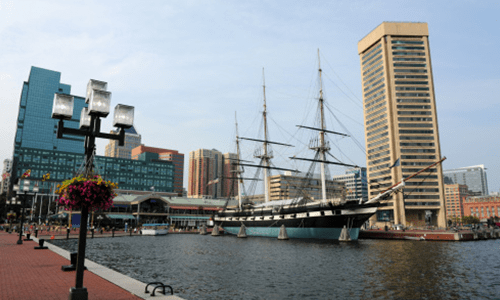
Baltimore, MD
Once a predominantly industrial town, with an economic base focused on steel processing, shipping, auto manufacturing, and transportation, the city experienced deindustrialization which cost residents tens of thousands of low-skill, high-wage jobs. The city now relies on a low-wage service economy, which accounts for 90% of jobs in the city. The city is home to the Johns Hopkins Hospital. Other large companies in Baltimore include Under Armour, Cordish Company, Legg Mason, McCormick & Company, T. Rowe Price, and Royal Farms. A sugar refinery owned by American Sugar Refining is one of Baltimore’s cultural icons. Nonprofits based in Baltimore include Lutheran Services in America and Catholic Relief Services.











